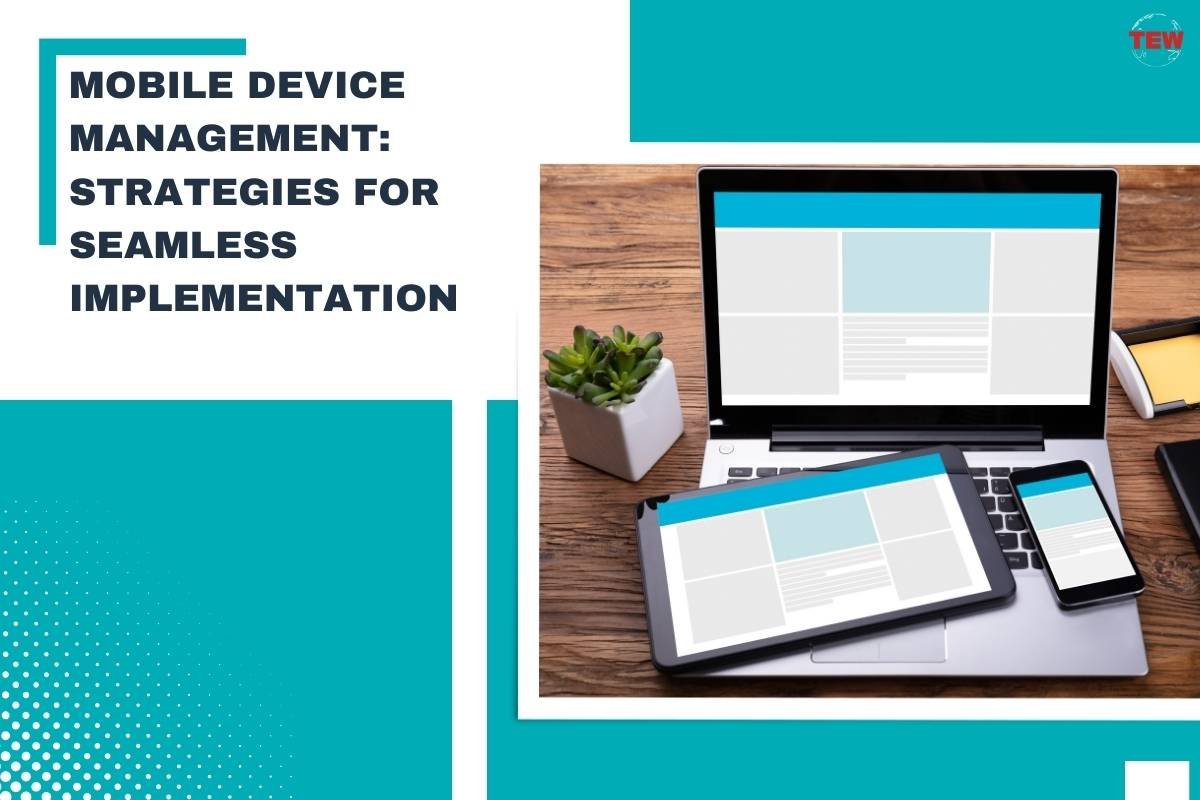The modern workforce thrives on mobility. Employees use smartphones, tablets, and laptops to access corporate data and applications on the go. This flexibility enhances productivity, but it also introduces security challenges.
This is where Mobile Device Management (MDM) comes in. MDM is a software solution that helps you manage and secure all the mobile devices in your organization. Think of it as a central hub that keeps everything organized and protected. However a successful MDM implementation requires more than just installing the software.
Here are 8 key strategies for implementation of mobile device management (MDM):
1. Understanding Your Needs
Before exploring more about mobile device management, take a step back and assess your organization’s specific needs. How many devices do you need to manage? Do you have a policy that allows employees to use their personal devices for work purposes, commonly known as a Bring Your Own Device (BYOD) policy? These questions may help you determine the features and functionalities you need in an MDM solution.
2. Choosing the Right MDM Solution

With a plethora of MDM solutions available, choosing the right one can feel overwhelming. Don’t settle for the first option that pops up in a search. Consider the following when shopping around:
1. Identify Your Needs
Make a list of the must-have features for your MDM solution. Consider factors like device compatibility, security capabilities, application management, reporting and analytics, and budget.
2. Research Potential Vendors
Shortlist a few MDM vendors that cater to your specific requirements. Read online reviews, compare feature sets, and check out pricing plans.
3. Evaluate and Compare
Take advantage of free trials or demos offered by MDM vendors. This allows you to test-drive the solution and see if it integrates well with your existing IT infrastructure.
4. Security is Paramount
Ensure the MDM solution offers robust security features like encryption, remote wipe capabilities, and multi-factor authentication. Such may significantly reduce the risk of unauthorized access, even if a hacker steals a user’s password.
5. Scalability Matters
Consider your organization’s growth plans. Choose an MDM solution that can scale to accommodate an increasing number of devices and users.
6. Ease of use is key
The MDM software should be user-friendly for both administrators and employees. Look for solutions with intuitive interfaces and readily available support resources.

Choosing the right MDM solution requires careful consideration of your organization’s needs and priorities. Security should be a top priority, so ensure the solution offers robust security features.
3. Prepare Your Users
MDM might sound like a magic security shield, but it’s only effective with user buy-in. Let your employees know about the MDM implementation well in advance. Explain its purpose, the benefits it offers (like improved security and easier access to work resources), and how it might impact their daily routine. Transparency builds trust and reduces resistance.
4. Enrolling Devices
Device enrollment is a critical step in MDM. Choose between self-enrollment and IT-led enrollment based on your organization’s size and resources. Self-enrollment allows employees to register their devices, while IT-led enrollment offers more control and consistency.
5. Setting Strong Policies
MDM allows you to configure security policies for all managed devices. This could include requiring strong passwords, enforcing encryption, and restricting access to certain apps or websites. While security is paramount, avoid creating overly restrictive policies that hinder productivity. Strike a balance between safeguarding data and allowing employees to get their jobs done efficiently.
6. Empowering Your Users
Even the most intuitive mobile device management software might require some basic user training. Provide employees with clear instructions on how to use the system, how to troubleshoot common issues, and who to contact for support. Ongoing support is essential for ensuring user adoption and maximizing the effectiveness of your device management solution.
7. Keeping an Eye on Things

MDM solutions offer valuable insights into how your devices are being used. Use these reports to identify potential security risks, track app usage, and ensure overall compliance with your policies. Regular monitoring allows you to proactively address any issues before they snowball into bigger problems.
8. Adapting to Change
The mobile landscape is constantly evolving. New devices, operating systems, and security threats emerge all the time. Regularly review your MDM strategy and adapt it to these changes. Stay updated on the latest features offered by your mobile device management solution and consider incorporating them into your existing policies.
Conclusion
By following these strategies, you can ensure a smooth MDM rollout that enhances your organization’s security posture without hindering employee productivity. Remember, MDM is an ongoing process, not a one-time fix. With careful planning, clear communication, and continuous improvement, you can leverage the power of MDM to navigate the mobile world with confidence.





